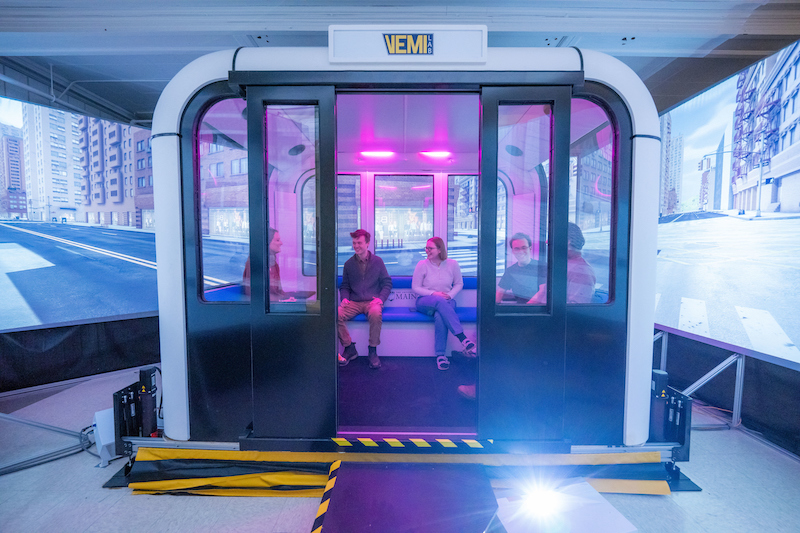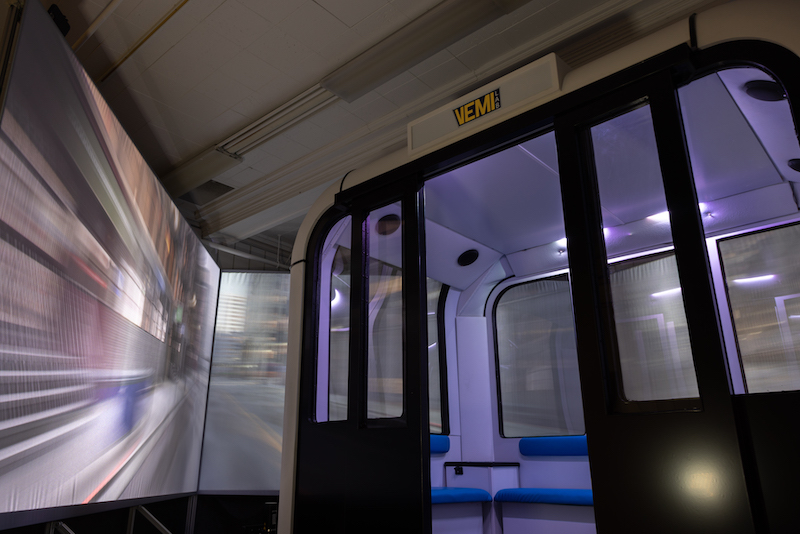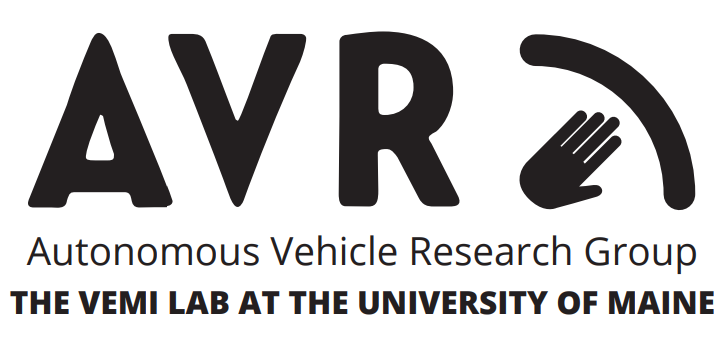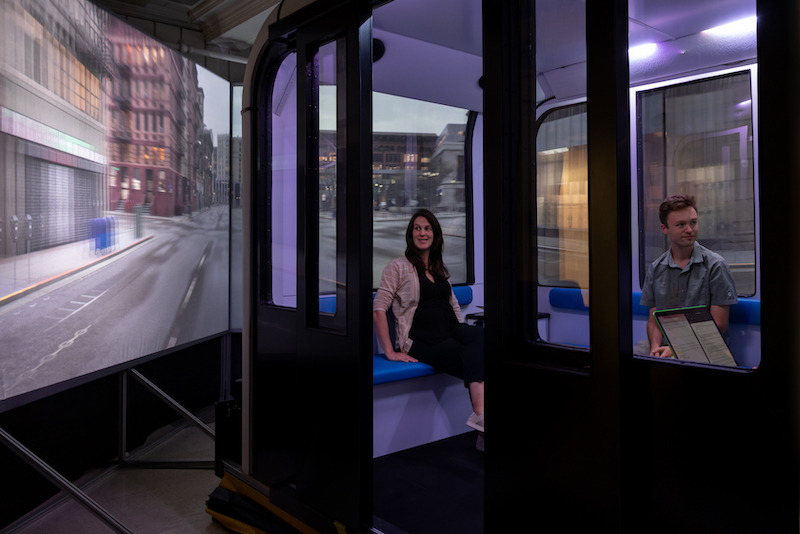Human-centered Autonomous Transportation
One of the most-cited selling points of autonomous transportation is the removal of humans from the equation. A primary reason is safety – if humans aren’t in control, human error is reduced and transportation will become safer for all. While humans may not be piloting the vehicles of the future, human input and interaction will be crucial to proper and efficient functioning of autonomous transportation at every level. Despite this reality, the vast majority of research on AVs and autonomous transportation ignores the ’human’ perspective and looks only at engineering factors, when the intersection of both is what is needed for success. At VEMI, we research these intersection points, a concept we call “Human-Vehicle Collaboration.”

How will we collaborate with autonomous vehicles?
Some scenarios to consider…
- What if you want to change routes, add a stop, or otherwise modify your trip? Say you need to pull over for an unscheduled snack or bathroom break – how will you communicate that to your vehicle? In other words, how can we get the human intelligence (HI) to effective communicate with the artificial intelligence (AI) at the wheel.
- If your vehicle needs to charge or has an operational issue that requires attention, how will it communicate that information to you?
- In a vehicle that contains multiple passengers who may have competing interests, whose needs are prioritized? (Consider a rideshare – you just got in and are running late to work, but other passengers already in the vehicle are expecting to be dropped off first – how do you navigate this?)
- How will collaboration work for passengers with different communication needs? In a vehicle with a human driver, passengers can talk with the driver about their needs. In an autonomous vehicle, how will a person with visual impairment identify and know when they have reached their destination or which side of the car they should exit on?
At VEMI, we’re exploring these questions and more to understand how we can design autonomous transportation that works for everyone. Our award-winning, cross-institutional Autonomous Vehicle Research Group is broadly focused on questions of universal design, with other research interests including trust in autonomous vehicles and innovative technology solutions (machine learning, multisensory navigation using combinations of natural language, haptics, and augmented vision, etc.).

SELECTED RESEARCH
Fink, P.D.S. & Giudice, N.A. (2021). Federal Accessibility Standards for Fully Autonomous Vehicles. Policy Brief for the Day-One science and technology policy accelerator, Federation of American Scientists, IT & Technology Policy.
Fink, P.D.S., Allaban, A.A., Atekha, O., Perry, R.J., Sumner, E.S., Corey, R.R., Dimitrov, V., & Giudice, N.A. (2023). Expanded Situational Awareness Without Vision: A Novel Haptic Interface for Use in Fully Autonomous Vehicles. Proceedings of the 2023 ACM/IEEE International Conference on Human-Robot Interaction (HRI ’23) (pp. 54-62). DOI: 10.1145/3568162.3576975. (corresponding author). Acceptance rate 25.2%.
Fink, P.D.S., Dimitrov, V., Yasuda, H., Chen, T.L., Corey, R.R., Giudice, N.A., Sumner, E.S. (2023). Autonomous is Not Enough: Designing Multisensory Mid-Air Gestures for Vehicle Interactions Among People with Visual Impairments. Proceedings of the 2023 CHI Conference on Human Factors in Computing Systems (CHI ’23). DOI: 10.1145/3544548.3580762. (Acceptance rate 28.39%).
AVA: An Accessible Ride-hailing, Mobility, and Navigation Tool for Fully Autonomous Vehicles. Co-presenters: Giudice, N.A., Corey, R. R., & Allen, A. Inclusive Design Challenge Showcase and Design Challenge, Washington D.C. (virtual). (2021)
Fink, P.D.S. & Giudice, N.A. (2021). Vibrotactile maps for promoting spatial understanding in autonomous vehicles. Talk: 8th International Conference on Spatial Cognition (ICSC 2021). Sept. 13-17, Rome, Italy (virtual).
Fink, P.D.S., Holz, J.A., & Giudice, N.A. (2021). Fully autonomous vehicles for people with visual impairment: Policy, accessibility, and future directions. ACM Transactions on Accessible Computing (TACCESS) 14, 3, Article 15 (17 pages). DOI: 10.1145/3471934 (corresponding author).



